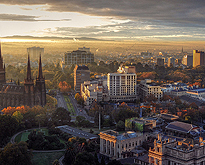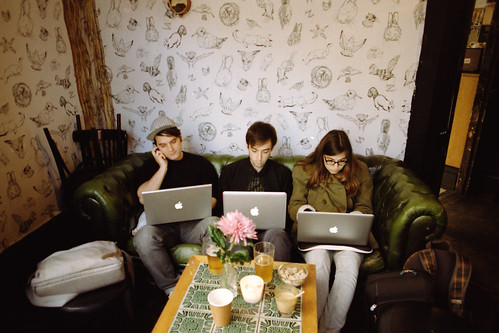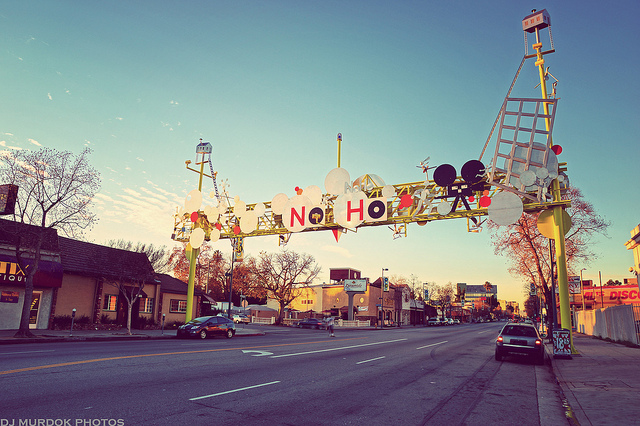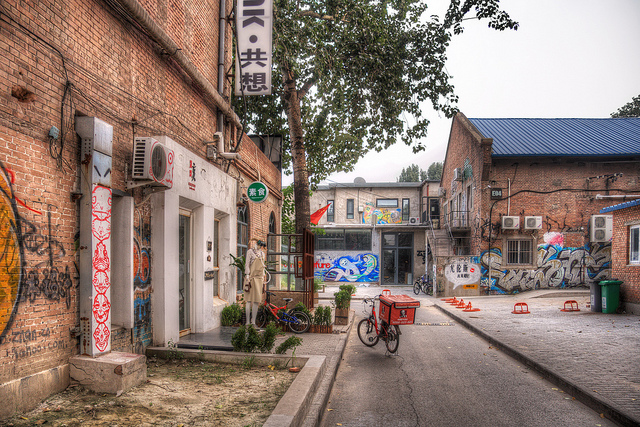Last Updated on February 28, 2024
Deemed the cultural or often arts quarter this designated area in a particular city is thriving with artists, galleries, theatres and dance halls. These areas are often encouraged by public policy-making and planning, including the injection of money into these areas. However, at the root of them is the artists and creative’s themselves. This acts as a honey-pot affect and once creative people settle there it only serves to pull in more like-minded people who strive to push creative boundaries. Let’s take a look at a selection at these unique cultural hubs.
America: NoHo Arts District, Los Angeles
Formed in 1992 by the current business owners, this North Hollywood district is home to contemporary theatres, art galleries, cafes, and shops. NoHo” not only denotes its location, but also plays off the famed “SoHo” Arts District of New York City. The area has been described by some as a cocktail mix of bohemian and yuppie. NoHo boasts over twenty theatres and the neighbourhood has an urban, electric feel. In fact NoHo is regarded as a major performing arts superpower and in its theatres you can view classic plays as well as modern experimental works.
One of these amazing theatres is El Portal which was opened in 1926 with its amazing art deco marquee on display for all to see. You will often see actors rehearsing their lines on the sidewalk as dancers practice their steps and guitarists play their songs. The area incidentally has the largest group of music venues west of the Mississippi which undoubtedly is a natural attraction to aspiring musicians.
Another very popular spot in NoHo is the Millennium Dance Complex which in the past has hosted regular guest sessions from the likes of Janet Jackson and Britney Spears. Although the district is relatively young, it has big regeneration plans as beautification efforts by the LA Community Redevelopment Agency are in the works and is set to entice even more people into the area.
England: Shoreditch, London
In the borough of Hackney, Shoreditch and its surrounding Spitalfields, Dalston and Hoxton are all full of hidden bars, galleries, parties, theatres and artists. Notable famed residents adding to its creative desirability included playwright Harold Pinter and poet Edgar Allan Poe, and more recently artists Damien Hirst and Tracey Emin. In the past ten years this area has been transformed from being a particularly cheap real estate area, which attracted hoards of poor artists, to becoming the centre of the art world. The artists that settled here generated a vibrant, creative culture which regenerated the area.
Now thriving, a gallery such as Joplin’s ‘White Cube’, which occupies the south side of Hoxton Square is well-known for its large-scale exhibition openings. No longer is a Mecca of seedy and gratuitous strip clubs and hesitant locals, Shoreditch now more synonymous with skinny jean wearing trendies who rave about music so cool it hasn’t even been recorded yet. You will find a lot of graffiti here as most of these wall artists feel that this canvas is their God-given right to use and they shouldn’t be challenged on its legality. Speculative property investment has seen larger than life glass buildings multiply as the fashion conscious seek a place they can identify with.
Damien Hirst is one of many famous artists that moved in to Shoreditch. Tracey Emin can also be found at either Shoreditch House (a private members club where you will also often find rock musicians, supermodels and hollywood A-listers)or at the Golden Heart pub on Commercial Road.
Australia: Melbourne, Victoria
Australia has a long history of film production, visual arts and music. Melbourne is recognised as the arts and culture capital. Along the Southbank area are a series of galleries, performance venues and spaces in the heart of the city. All of the venues in Southbank are publicly funded which helps to project that community feel. There isn’t a “luvvy” attitude but rather a sense of ‘everyone welcome’. Once an old, neglected and mostly industrial area, Southbank is now an integral part of the creative fabric of Melbourne life.
In the early 1990s Southbank was subject to urban renewal aimed at stimulating development in a period when Melbourne was experiencing an economic downturn. Southgate’s landmark “Ophelia” sculpture by Deborah Halpern has been used to represent Melbourne in tourism campaigns. In 2009, The MTC Theatre Complex and combined Melbourne Recital Centre won the Moore Stephens Award for public buildings which was the country’s highest award for a building. More developments are planned and this modern vision for arts in Melbourne increases the cultural presence for the entire state.
China: Beijing
Beijing’s “798 Art District” is located in the northeast of Chaoyang District. The area consists of a number of galleries, design studios, art exhibition spaces, studios, and fashion shops. After the deconstruction of factories in the area in the 1990s low rents drove the influx of many artists and contemporary art institutions which gradually formed an artistic community. This artistic rebirth has allowed the area to host a number of notable high-profile exhibitions, including Wang Wei’s “Temporary Space”. Since the opening of the Beijing Tokyo Art Project in 2002 the district’s popularity has exploded with a huge increase in design companies, high-end tailors and galleries opening.
In keeping with the area’s “community spirit”, most galleries do not charge either exhibitors or visitors. There are display works from many foreign contemporary artists as well as local. There has been a host of periodic arts festivals in the last two to three years which all last around three weeks. Here you will witness performing artists sharing the stage with various eclectic musicians. The fame of the 798 district continues to attract visitors from around the world as a superior alternative to any tourist brochure.
Italy: Bologna

This is Italy’s newest art district. Based near the Reno River; this area of the city has previously had a successful industry in manufacturing. However, now it has made the move to something of a more creative nature: modern art and design. Being named as European Capital of Culture in 2000 allowed the city to raise money to transform a deprived area and turn it in to the “Factory of the Arts”. This then paved the way for art galleries, design shops and lounges to pop up around the area. The Bologna Museum of Modern, a purpose-designed centre of modern and experimental art, was re-opened in 2007 as a response to the interest in the area.
Once a slaughterhouse, the “Cineteca” is a centre for film research and restoration. Fans of the silent movies can rent DVD’s of the early Charlie Chaplin films as the great man’s movie archives are housed here. There are also connecting buildings which are named after the Lumiere brothers who were the pioneers of public movie theatres.
Note: A Cities Beating Hub: Creative Districts of the World was researched and written by on behalf of HotelClub; where you can find beautiful rooms for your creative journey.
We hope you enjoyed this article! We would love to hear your feedback, so please don’t be shy to comment below! For more inspirational articles be sure to subscribe to the RSS-feed and follow Inspirationfeed on Twitter, Google+ and Facebook! If you appreciate our work, please share this article with your peers!






